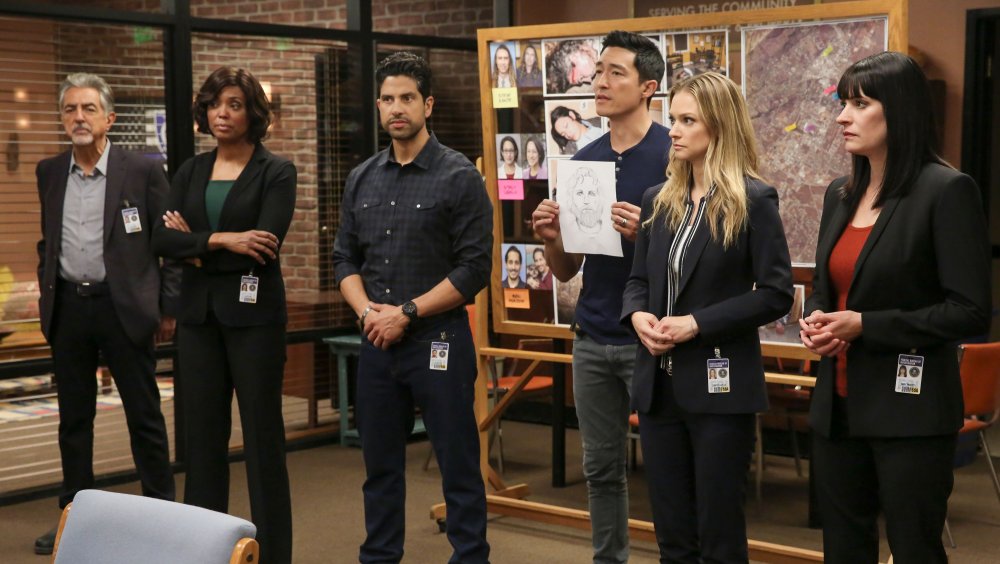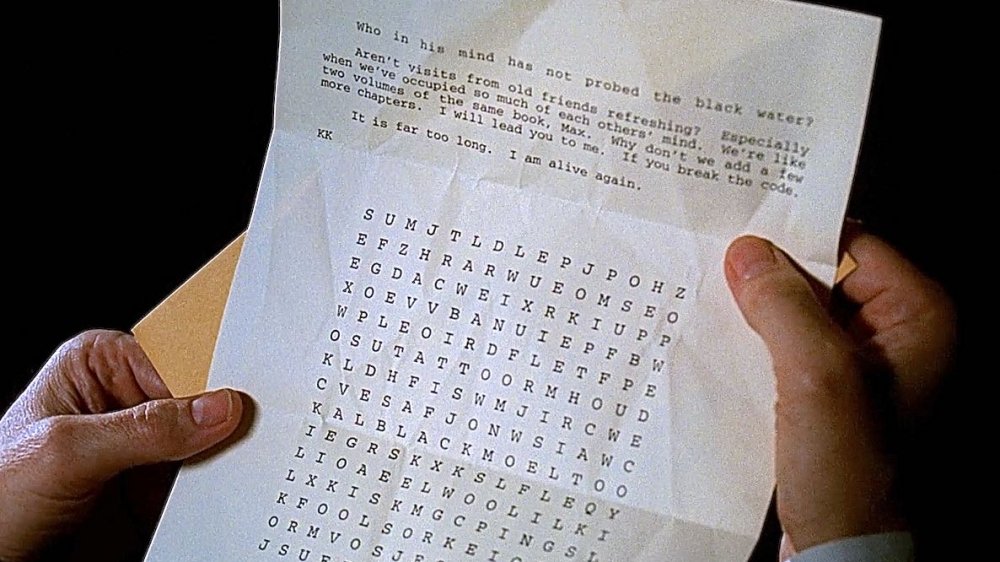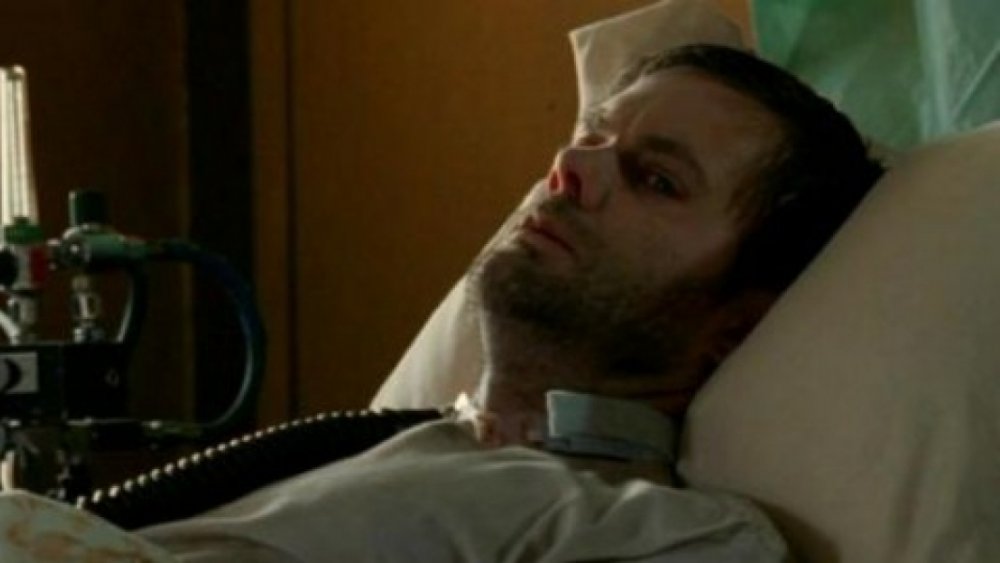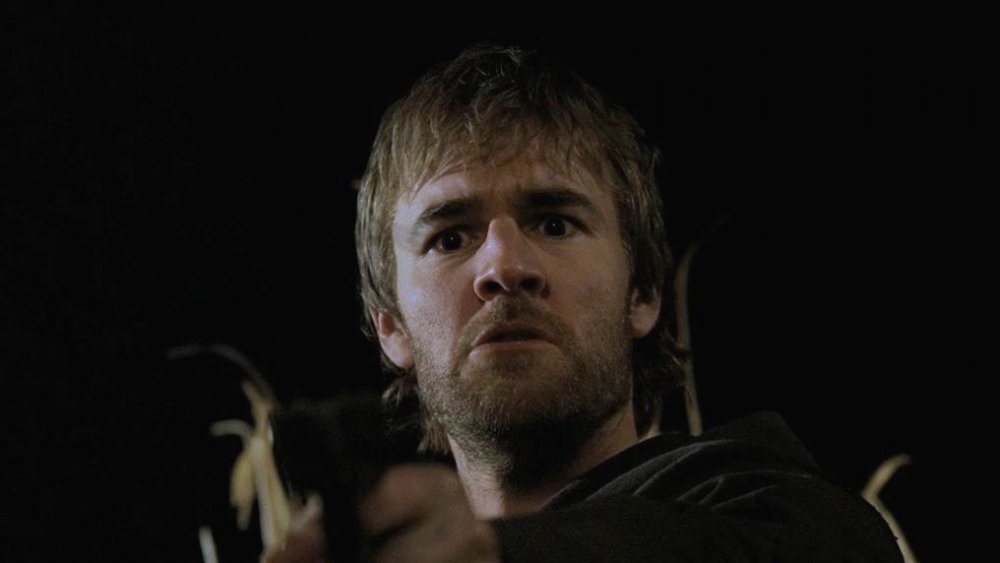The Real Life Cases That Inspired Criminal Minds Episodes
Criminal Minds was conceived as a fictionalized interpretation of a real unit within the FBI, and its popularity led to an increase in popular knowledge of the general precepts of criminal profiling, and how the Behavioral Analysis Unit generally works. Criminal profiling is the art and science of trying to understand the underpinnings of what causes extreme, serial violence, so in general, episodes draw on clinical findings (collected since the seventies), to inspire their fictional murderers. That's all well and good for nerdy purveyors of criminal science, but the demand also exists to at least reference — and in several cases, base entire fictional characters on — actual high-profile serial killers.
No matter your depth of knowledge, everybody is aware of your Bundys, your Dahmers, ye olde Jack the Rippers, and those episodes are pretty easy to pick out. Other than those fun interpretations of commonly-known trivia, though, there is an entire world of lesser-known murders and serial violence out there. The original executive producer of Criminal Minds, Ed Bernero, had previously been a police officer, via Deadline, and the show's primary FBI consultant and occasional writer, James Clemente, also had huge pools of real-life knowledge and resources to draw on, to keep the show fresh. Though Criminal Minds has occasionally been criticized for being hysterical, at times, the truth is that life — and criminal death — are their own sources of drama.
Here are just few episodes you might be surprised to learn were pulled from reality.
Particularly timely
BTK (a self-stylized acronym short for "bind, torture, kill") was Dennis Rader, according to Murderpedia, a relatively well-known serial murderer who reemerged in the new millennium after years of silence and no known murders. Rader first attracted attention in 1974 after a quadruple murder that killed an entire family, going on to have 10 total victims of his cruel sadomasochistic violence. The standout facet of his MO — contacting the media to boost his ego and terrorize the community — began in 1978, and continued on through 1988, whereupon he went silent for unexplained reasons. Rader is currently in prison serving ten life sentences in Kansas.
The very first season of Criminal Minds fictionalized Rader in the episode "Unfinished Business", in which the killer has pretty much an identical MO, and brings the BAU to bear by resurfacing after a decade-plus period of silence. The particular bit of interest here, however, is in realizing just how timely this episode was. Rader began sending packages under his pseudonym again in early 2004, setting off a chain of events that led to his eventual apprehension in February 2005. Criminal Minds' first season aired in 2006, but the season's writing and planning would have all taken place in the latter half of 2005. Capturing BTK was one of the biggest national law enforcement achievements of that decade, and Criminal Minds took a page out of Law and Order's "ripped from the headlines" style before it had even gone to air for the first time.
Stranger than fiction
Criminal Minds always put extra oomph into its season finales — so much so, that their cliffhangers would usually launch the following seasons. One of the best examples of this is the two-parter "To Hell and Back", featuring the fraternal killer duo Mason (Garret Dillahunt) and Lucas (Paul Rae Rae) Turner. Mason is the paralyzed, bedridden mastermind urging his mentally-handicapped brother to collect people for him to kill, then feed them to the hogs they keep on their rural Canadian farm. The scene in which the BAU discovers hundreds of shoes kept as trophies is probably one of the most haunting moments in the entire series' history. As good as the episodes are, surely something so elaborate must be fantastical, right?
Well, no. While the episode's inclusion of brothers committing the murders and Mason's character in particular takes on full-tilt horror movie overtones, an actual Canadian did kill a whole bunch of people, and got away with it, because he disposed of bodies in the same fashion. Robert Pickton, according to Murderpedia, claimed to have murdered 49 women throughout the nineties and early 2000s before being apprehended in 2002, but forensic accounting of this has been difficult. Methods he could have used to dispose of evidence range from natural decomposition on his rural property, to feeding the bodies to pigs, to rumors that Pickton actually ground human remains into pork product for commercial sale. Pickton was ultimately charged, and convicted, with just six murders, though legal proceedings dragged on for years.
Extreme kidnappings
The real-life BAU is not singularly interested in murders, though that is the chief reason they are called upon to assist local law enforcement. However, the FBI (not just the BAU) has primary jurisdiction over in-progress kidnappings, and specializes in attempting to recover victims before the worst can happen. Another seemingly-extreme episode of Criminal Minds, "The Company", focuses on the very rare phenomenon of long-term kidnapping in which a woman is held for years as a slave, and bears her kidnapper's child, while being leveled with the threat that the titular "company" will kill her entire family.
This is another example of the writing team taking a real-life incident and extending the event to be a bit more fantastical for drama's sake. Colleen Stan, as reported by People Magazine, was taken captive in Eugene, Oregon in 1977 and held by Cameron Hooker and his wife until 1984 — and much of that time was spent being kept 23 hours a day inside a wooden box. In the Criminal Minds episode, the so-called "company" is a real collective of people involved in human trafficking that turns non-fiction into fantasy, but in Stan's case, the "company" was an empty threat leveled against her by Hooker (combined with abuse) to keep her compliant. Hooker's wife eventually confessed to Stan that Hooker was not in fact a member of the fictional "company", and eventually Stan escaped.
These kinds of kidnapping scenarios are incredibly rare, and even rarer to have a living victim escape, but they do happen. Hooker was convicted in 1985 to life in prison, with the possibility of parole that — as of this writing — will next be possible in 2030, when Hooker is 83. His wife received legal immunity for testifying against him at trial.
Deepcut killer inspiration
Season three was when Criminal Minds really began to hit its stride, despite the sudden loss of Jason Gideon (Mandy Patinkin). One of the best episodes of the season, "Identity", is stuffed to the gills with drama: Montana-based anti-nationalist militia men, references to Ruby Ridge (which Rossi is revealed to have been present at), and a fascinating pair of killers that experience a final, chilling twist: This occurs when the subservient half of the duo kills his so-called mentor and dominant leader to assume his entire identity, complete with replicating a characteristic scar. This is part of an examination of a very rare psychological phenomenon, folie-a-deux.
While the overall theming around identity and folie-a-deux is the imposition of fantasy upon real events, the episode is loosely based on the killer duo Leonard Lake and Charles Ng. They were, according to Murderpedia, two former marines and would-be militiamen who committed a series of rapes and murders in California between 1984 and 1985, though Leonard Lake is accused of committing previous solo murders in the years before. They even kept a map leading to caches of trophies — victim IDs and personal effects — much like in the Criminal Minds episode.
The primary actor of the two, Leonard Lake, committed suicide by ingesting homemade arsenic pills he'd sewn into his clothing after being picked up by police for having a stolen ID. It was not known, at the time, that it belonged to one of his victim's. Charles Ng, despite claiming to only have aided Lake after the fact, and never actually killed anyone, was convicted of 11 counts of murder. As of this writing, he is still on death row. The suspected actual victim count could be as high as 25.
When it happens the other way around
Our last entry is a special case: an example of the opposite, accidental, and unfortunate phenomena wherein television inspires real-world acts.
In 2011, a 10-year-old boy shot and killed his father in their home after sustained abuse. The boy was reportedly worried his father — a life-long Neo-Nazi, who'd been reported to Child Protective Services in the past — and his stepmother were going to divorce. This would've left him alone with the man, and he was frightened by a threat his father had also made to burn the house down, with everyone inside, as they slept.
After his apprehension, as reported by the Press-Enterprise, the boy told investigators he had recently seen an episode of Criminal Minds in which a child murdered his abusive father — and, in the show, never faced any criminal charges for it. As a result, the young man thought he might be able to do the same, without repercussions. The exact episode was never named, in the crime reporting, but it's possible he was referring to Tobias Hankel (James Van Der Beek), the serial killer at the heart of the two-part episodes "The Big Game" and "Revelations." A younger version of Hankel is shown on-screen killing his abusive father, though in the series, this is simply following his father's orders.
That said, abused children occur frequently in Criminal Minds' plots, so it is very difficult to know for sure. Tragic as such media-inspired incidents may be, they are, thankfully, extraordinarily rare.





